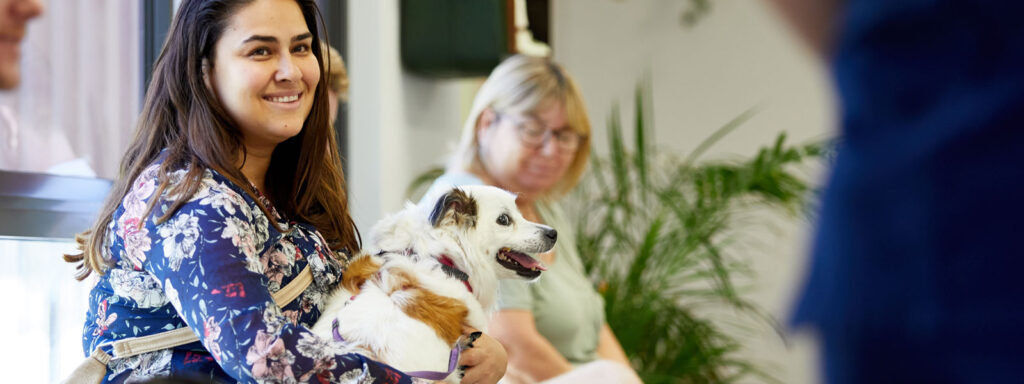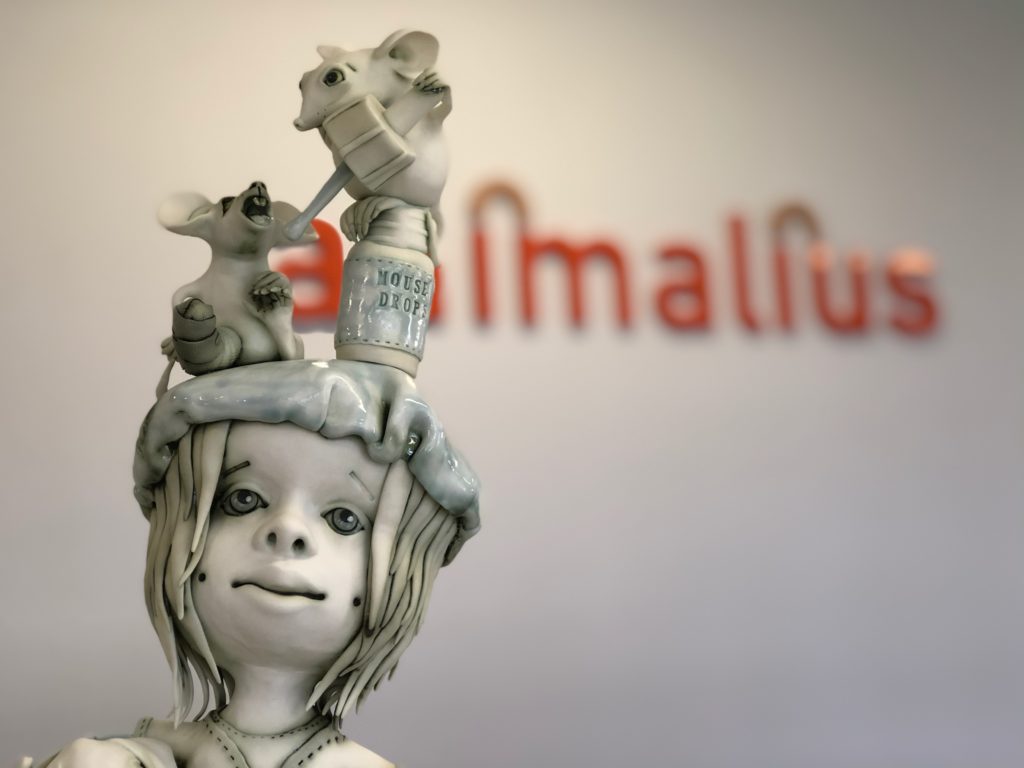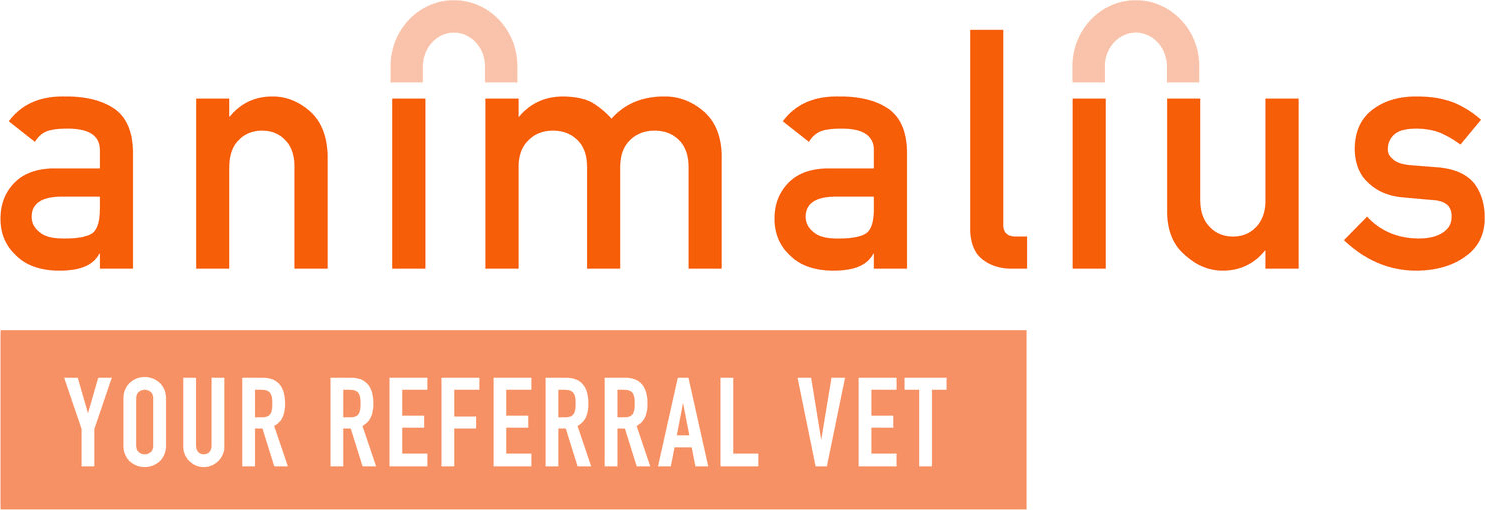PREPARING FOR YOUR VISIT TO ANIMALIUS
Animalius has a calm, comfortable and spacious waiting area equipped with tea and coffee making facilities, free wifi and charging ports for your devices, so if you need to wait for your pet to have a procedure you can relax and get on with some work or recreation.

FAQs
Q: What is the procedure for getting an outpatient appointment at Animalius?
A: You need a referral from your veterinarian for all appointments at Animalius. Your vet will submit a referral online and send us any relevant history, blood or laboratory test results and x-rays. They can choose to have Animalius contact you direct to make the appointment, or have you call us. If urgent, it is best that your vet call us direct to facilitate an emergency appointment. We do our utmost to fit emergencies in.
Q: What happens at an outpatient ultrasound appointment?
A: Please arrive on time or a few minutes early to your appointment. Your pet may like a few minutes to settle in. The waiting room is usually quiet and calm and there are separate dog and cat areas, but if your pet is not happy in the company of other animals you can wait in our fenced lawn area outside, or in a consulting room – just let our client services staff know your preference. You can call ahead if you wish.
One of our dedicated imaging nurses will meet with you, discuss the procedure your vet has requested, and the costs. You can update them on any concerns you have and provide additional pertinent history or symptoms your pet may be experiencing since your visit with your vet.
Our nurse then brings your pet down to the imaging suite to be clipped ready for their ultrasound, and you can relax in our waiting area with a tea or coffee. We prefer you don’t leave as we may need to discuss important results with you during the study and this is best done in person.
Once the ultrasound is complete, you can settle the account and one of our staff will discuss the results with you. Full payment is required on the day for imaging procedures. We provide a full written report via email to the referring veterinarian and to yourself, including a link to the ultrasound images, by the end of that day (often within the hour). If you do not receive your report, please check your junk mail folder, or contact our client services team so they can check we have your correct email address. There is a particular problem between our practice management software and bigpond addresses which can be troublesome.
You will then usually schedule a follow-up appointment or have a phone call with your regular veterinarian to discuss the results of the ultrasound and make a plan for treatment/management/surgery as appropriate. Our radiologists may make recommendations based on the ultrasound results, and will administer any emergency treatments if necessary, but your veterinarian remains in charge of your pet’s treatment and they will make all ongoing decisions with you unless they choose to refer you to one of our other services (medicine, surgery, dentistry, dermatology).
Q: Do I need to fast my pet?
A: Depending on the reason for your visit, it is possible you will need to fast your pet. Fasting is necessary for several reasons:
* To prevent your pet vomiting when sedatives or anaesthetics are administered. Vomiting creates a risk of aspiration of fluid into the lungs which can be life-threatening.
* To keep gas and food out of the intestinal tract, as this can make abdominal ultrasounds non-diagnostic
* It is important for many blood tests as feeding can affect some test results.
You will be notified of the need to fast your pet by text or by our staff at the time of making the appointment. This means taking away your pet’s food after dinner the night before and not feeding breakfast on the day of your visit. Your pet can have ACCESS TO WATER AT ALL TIMES. If your pet is receiving important medications that need to be given with a small amount of food, please ask us for advice about managing this. If you aren’t sure, then it is safer to administer medications as prescribed. If your pet has diabetes then please speak with our staff or your vet about managing their insulin and feeding before the visit.
Some animals, such as rabbits and very young patients, should not be fasted. If in doubt, give us a call.
Q: Do you have to clip my pet?
A: We clip or shave small amounts of hair when placing intravenous cannulas for general anaesthesia, usually on the forelegs but sometimes in other places. This is important for good asepsis. We also shave for collecting blood samples from the jugular vein, and over the back of the head or base of the tail for a CSF collection. For ultrasound, the coat needs to be clipped close to the skin, to allow the ultrasound beam to penetrate for good image quality.
We are always extremely careful when clipping, but some patients do react to clipping and can develop a rash or be itchy when the hair is growing back. If this occurs, applying a soothing cream or cold compress will help. It is important to prevent excessive licking at the skin as this will exacerbate any damage.
If your pet has sensitive skin or you have a show dog, please alert our staff and we will do our very best to accommodate your needs.
Q: How long does an ultrasound take?
A: Our ultrasound appointments are scheduled 45 minutes apart, however you can appreciate that sometimes we have patients with complex medical conditions or behavioural issues and anxiety that require longer preparation or examination times, and others are very quick. Your pet may need to be with us between 20 minutes and an hour, usually around 30-45 minutes. Occasionally we have emergencies or very complex patients that take longer, and our staff will always keep you updated with any expected wait times. We appreciate your patience if this occurs. It is the nature of medicine that you cannot always predict emergencies.
Q: Will you sedate my pet?
A: Sedation is sometimes needed for diagnostic testing, which is an important reason your pet should be fasted before most appointments. Our veterinarians administer a sedative to calm and relax our patients for tests that may be uncomfortable, require them to be still, or to relieve distress in patients who display marked anxiety or aggression. Even beautifully mannered patients may need sedation for x-rays or ultrasound, because these tests may require them to be in unusual positions, to stop panting or relax their abdominal muscles to allow a good result. We always endeavour to manage without sedation, using quiet, calm handling techniques, and taking time to allow our patients to relax and acclimatise to their environment, but will administer safe sedatives tailored to each individual patient’s needs if necessary. For patients with special medical needs, we have a specialist anaesthetist who advises on safe sedative protocols.
Under sedation, patients are conscious but relaxed and happy. It is not a full general anaesthetic. We typically reverse the heavier portions of the sedative and pets are usually bouncy enough to trot out after their appointment. Once back with their family they often look a little sleepier as they relax in your company, and you may find when you get home that they sleep more for a few hours after your appointment, which is very normal. If you are ever concerned, you can call us or your local veterinarian for advice.
Q: Can my pet stay overnight at Animalius?
A: We have fully staffed overnight care for our patients Monday to Friday morning. On Friday night and over the weekend, patients needing overnight care are transferred to an emergency centre with appropriate facilities, depending on the needs of the patient and geography of the family.
Q: What payment options does Animalius offer?
A: Full payment is required at the time of the appointment or upon discharge. We accept Visa, Mastercard, EFTPOS and Cash. Bank transfers are also accepted but must be arranged 3 business days prior the procedure to ensure funds clear prior to admission.
For procedures, we require a 50% deposit at time of admission*.
VetPay
Our hospital accepts VetPay payments; however, since Animalius and VetPay are not directly affiliated, you will need to register with VetPay prior to your appointment.
If you are a new VetPay client, please note that 10% of the total invoice amount must be paid directly to us at time of appointment/discharge.
Please see the following link for more information on VetPay: VetPay | Keeping Veterinary Care Affordable.
Insurance
Our client services team are happy to help process insurance claims so please ensure you bring along your policy details. If your insurance provider participates in GapOnly, we can process a GapOnly claim at the conclusion of the appointment or at discharge. As this process does take a little time (usually around 10mins), we kindly request you alert us to your desire to utilise GapOnly at time of admission to expedite the process. Visit GapOnly to check if your insurance company is a participating provider.
* Deposits for procedures may be reduced if pre-approval is validated by GapOnly prior to your pet’s procedure. Visit GapOnly and then follow the pre-approval link to complete the necessary paperwork. You will be required to submit a copy of your pet’s history and an itemised estimate for the intended procedure. Please contact us if you do not already have an estimate for your pet’s procedure, noting that these will only be provided after an initial consultation. Proof of pre-approval will be required at time of admission in order to qualify for a reduced deposit so please bring a copy of the pre-approval email from GapOnly.

